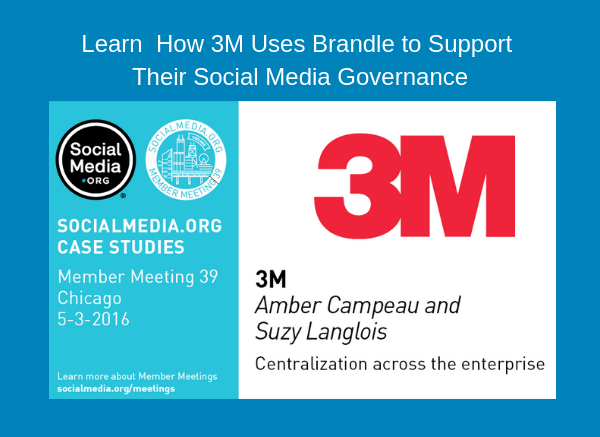 Business mergers and acquisitions are complex and delicate transactions with many moving parts to the process. With so many business assets and liabilities in review it’s easy to forget about the details of the digital branded portfolio of the acquisition target. However, it is a critical part of a company’s asset offering and often is a significant representation of a company’s intellectual property (IP). And if the acquiring company is not careful, it can quickly uncover that the digital assets are actually liabilities.
Business mergers and acquisitions are complex and delicate transactions with many moving parts to the process. With so many business assets and liabilities in review it’s easy to forget about the details of the digital branded portfolio of the acquisition target. However, it is a critical part of a company’s asset offering and often is a significant representation of a company’s intellectual property (IP). And if the acquiring company is not careful, it can quickly uncover that the digital assets are actually liabilities.
The bottom line: is the digital footprint of your target acquisition healthy and does it present a strong brand reputation to its customer base? And when these assets are transferred, can you secure, transfer and (hopefully) improve that brand reputation?
This post is intended to highlight the areas to watch for so you can say “YES” to each of those questions above!
--------------
What is included in an M&A Digital Footprint Review?
A company’s digital footprint includes all corporate registered websites and domains, all social media accounts, all apps, and the micropages on platforms where the company advertises it’s brands. If the company is global, then the footprint and review must be global.
The digital footprint may also include the extended ecosystem of the company’s employees, partners and influencers. Companies often have social media programs with these approved third-parties where brands are highlighted. Although these accounts would not be transferred to the acquiring company, it is a piece of the brand reputation and goodwill and should be acknowledged.
During M&A discovery, it is important to understand the strengths and weaknesses of a company’s social media governance and web presence management programs. Gaining as much information as possible before the final transaction occurs can ensure that all assets are successfully transferred to the new owner, and governance programs either continue or are created.
Four Common Digital Footprint Challenges in M&A
Here are four key digital footprint challenges to know about during a mergers and acquisitions process:
- Unidentified Points-of-Presence
A point-of-presence (POP) is a website, microsite, or social media accounts that represents a business, brand or person. A large corporation may have thousands of POPs related to their company. One of the biggest challenges in the digital world is the ability to keep a clean brand footprint across the web. Many brands have issues with counterfeit sites, rogue sites (well meaning people who create an account or site outside protocol), stale accounts that have not been active, and Facebook-generated pages (like Place pages) that have not been merged. It’s imperative that an acquiring company conducts a social media discovery to locate the digital assets representing a target company’s brands. This way, the acquirer will know the work ahead of them to clean up the web and may even ask the company to assist before the final transactions are complete. Businesses that skip this process run the risk of adopting an unclear digital brand reputation since customers have potentially witnessed brand inconsistencies. Running a web and social media discovery after a merger is certainly possible, but it may leave the new owner with more issues than anticipated.
- Lack of Credential Control
After the merge or acquisition, the rebranding efforts begin. However, if the new company’s employees don’t have access to these POPs, they can’t change them. Businesses going through a merger or acquisition must ensure that all credentials are centrally located and handed off to the relevant parties prior to final transaction. Hopefully, there is some team crossover to continue website, domain and social media transition, but in many cases, the employee turnover is fast. Gaining credentials up front is best. With a large digital portfolio, there will already be issues with some lost credentials and recovery will need to take place, but minimizing this is a key goal. Remember, it’s important to communicate with customers as quickly and clearly as possible to maintain (and grow) brand reputation. Losing control of influential POPs will prevent a business from doing that.
- Disorganized Rebranding
The best rebrands occur seamlessly and in an organized fashion. Businesses that don’t have access to a centralized inventory of acquired POPs, though, will struggle to implement a rebrand effectively. Centralized inventories enable employees to identify and monitor POPs and determine which POPs need to be updated, which have already been addressed, and which third-party POPs may present a threat to a business’s reputation. (Businesses going through a merger or acquisition are vulnerable to fake accounts that intend to damage a company’s brand perception.)
- Poor Compliance
Misuse of a brand online and poor company compliance can have a significant negative impact on companies going through a merger. Examples of poor compliance may include third-party persons breaking from brand policy or employees failing to adhere to regulatory-compliance requirements (such as, FFIEC for instance). Poor brand compliance can lead to a drop in brand reputation — for businesses in regulated industries poor regulatory compliance can spark fines from the regulatory bodies.
Final Thoughts
Mergers and acquisitions present a number of challenges to businesses on both sides of the aisle. But thinking of the digital assets as true corporate assets will help maintain the best brand reputation for both companies (and for the new combined company). At Brandle, we’ve worked with businesses across industries to help companies complete effective web and social media account discovery for key brands and IP. Our software allows businesses to create a centralized database that reflects their brand’s digital footprint. We’re experts in social media governance and web presence management, and we can help your business. Contact us here for more information.









